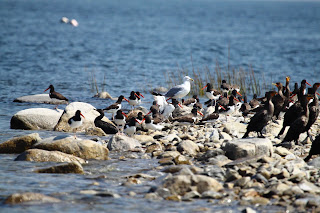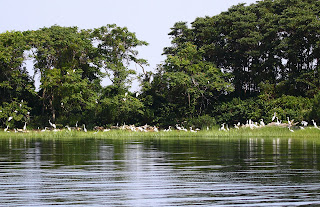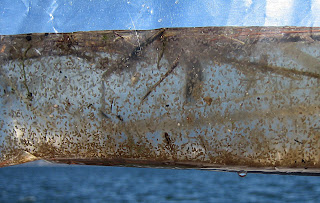While peering out my kitchen window, I notice that the hummingbird feeders had frozen up over night.
With this mornings temperatures being in the low twenties, I guess it's time to take these feeders down before the glass tubes break from the ice.
All was normal, White-throated Sparrows and Cardinals were under the other bird feeders, picking up seed that was being dropped to the ground by Chickadee's and Titmice.
Joining in on the feast were a number of Grey Squirrels.
Suddenly I saw a something spring out of nowhere, the wildlife that was just having breakfast scattered in all directions, I saw the critter that cause this commotion as it returned empty handed from under the junipers.
Although this is not the culprit, it was one of this guy's feral cousins that was looking for breakfast.
I saw where he went...
He appeared to go under the deck, I could see this place as a potential place for a surprise ambush.
I though he had gone back there to set up another attack.
Armed with a 2 million candlepower search light and my camera I set out to see if the cat was hiding in the dark shadows beneath the deck.
I didn't see anything obvious, but searching deeper into the darkness I saw something stir, however I didn't see the orange that was this cat's color.
Instead it was very dark...
...and with a black stripe.
I took a quick snapshot and feeling bad that I had rudely awakened this sleeping skunk from its winter slumber, I called off my feline search party.
As I was walking back towards the house, I saw one of our local Red-tail Hawks perched very close by in a neighbors tree.
Yes, this juvenile hawk was giving be a very stern gaze, not only had the cat interrupted his hunting, but I was certainly doing the same.
Back inside the warm comforts of the house, I could see the squirrels slowly inching their way back to the bird feeders.
I turned away from the window to leave nature to play out the remainder of this day on it's own terms.

























































+copy.jpg)


